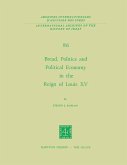Recent origin of s'ubject. A study on Contracts and Peace Treaties does not require a historical introduction because the problem is of a very recent origin. With regard to its present day importance it is remarkable that the subject found hardly ever expression in any Peace Treaty before 1919. One has only to go back to the Peace Treaties of World War I to find the first detailed provisions relating to contracts between enemies. The text of the relevant articles of the Treaties of the Versailles group is identical. Art. 299 Treaty of Versailles corresponds with art. 251 Treaty of St. Germain, with art. 180 Treaty of Neuilly, with art. 234 Treaty of Trianon. The Treaty of Lausanne of 1923 with Turkey which replaced the unratified Treaty of Sevres, was similar in outline but differed in some material aspects. Presently we shall see that the Treaty of Brest-Litowsk and the other eastern Peace Treaties did not prescribe any alterations in the municipal law of the Signatory Powers. The Peace Treaties of World War II concluded at Paris in 1947 with Italy, Roumania, Bulgaria, Hungary and Finland contain also a number of identical provisions on contracts. Annex XVI of the Treaty with Italy corresponds with Annex V of the other Treaties. Anglo-Saxon origin of Treaty provisions.








